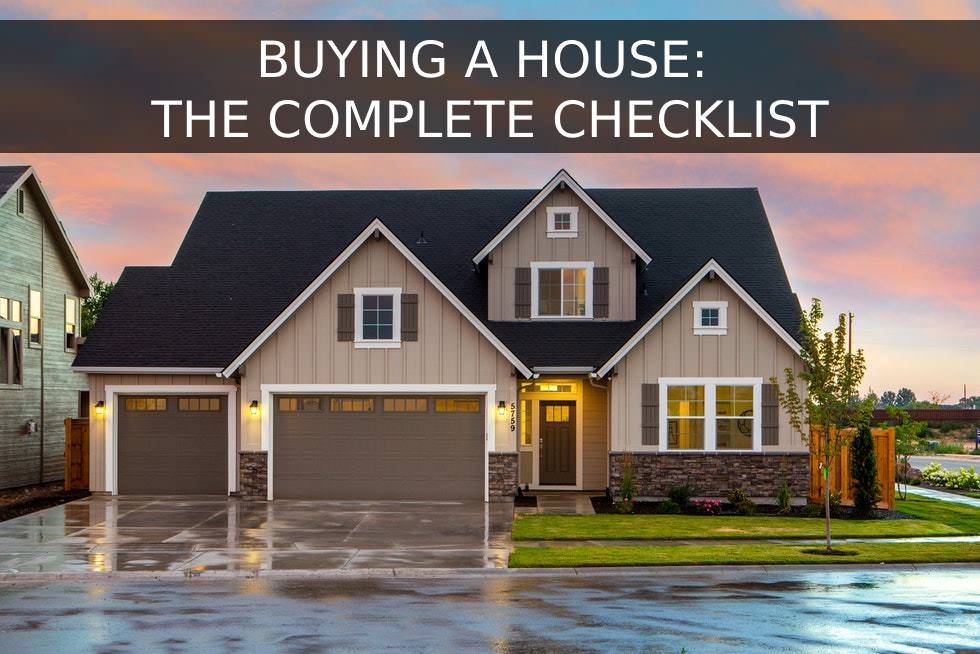Many would-be homeowners often worry about where to start and what to do when buying a house for the first time. While it can be a lot of work, it doesn’t have to be as stressful when you keep a checklist of things to accomplish. When it comes to buying a house, checklists can guide you to find the perfect home. After all, they exist to keep things as organised as possible and contribute a lot to a smooth purchase experience. You can also hire a property management company to get it done.
If you are looking to get a new home, here’s the ultimate buying-a-house checklist you need:
1. Evaluating Your Finances
Purchasing a house is probably one of the most significant commitments that one can undertake. Hence, it is crucial to address this pressing question first when buying a house.
Buying a home is more than just having the money on hand to purchase. It is a long-term commitment that requires you to look into some other financial aspects, such as being able to pay for the mortgage, the property taxes, insurance, and others. You must think of the present and your capability to attend to these responsibilities in the future.
Below are some more specific financial considerations when planning to buy a house:
Mortgage
Making an expensive investment as purchasing a house usually requires purchasers to take on a loan. But before you do that, you need to plan how to pay for it and know how it fits into your income.
Lenders often calculate your debt-to-income ratio to see how much the mortgage cost takes up in your income. They also need to know if you’ve got enough leeway to pay for them even when, for instance, you find yourself unemployed and are still looking for a new job.
Job Security
The stability of your income is an essential factor to consider in keeping you away from financial stress. For such a reason, it is necessary that you, the would-be homeowner, should also take note of whether you can afford to pay for the expenses despite the fluctuations that may happen in the market such as interest rate rises, inflation and so forth.
Lifestyle
How you spend your money matters as well. You should know that setting financial priorities when it comes to homeownership also requires you to give up on some things.
For instance, if you plan to live alone, you probably won’t need a three-bedroom house. Always spend based on what you can afford and within your own means. This will also help you get your pre-approval from potential lenders.
2. Finding a Lender and Getting Pre-Approval
Now that you have settled and taken your finances into account, you should find a lender and get their okay through pre-approval. In this step, lenders will ask you for thorough documentation about your finances and will need a lot of your patience.
There might be cases when what you and the bank think regarding what you can afford might not coincide. Taking note of the previously mentioned factors will get you better a chance of getting pre-approval.
3. Preparing a House Deposit
How much deposit is required depends on your mortgage, but having funds left over for other costs, such as interest rate rises, and lifestyle choices, will keep you away from being in a tight spot later on.
4. Choosing a Real Estate Agent
Now that some financial aspects are out of the way, you are now halfway through the checklist for buying a house. You can now look into real estate agencies in Bradbury to view what properties they might have on the market as well as any off-market potential sales too.
To make this easier, look up reviews in your locale or ask for referrals from your family and friends. Choosing an agent you can trust and be comfortable with will give you peace of mind.
5. Going House Hunting
Your real estate agent, at this point, will have prepared options that meet your needs and standards. Real estate in Mount Annan gives you quite the variety to choose from, so enjoy the process of on-site visits to open homes and the different features they showcase, such as their size, location, or general aesthetic.
However, be sure not to be carried away and keep your reason and priorities throughout the decision-making process. Weigh the pros and cons carefully and mull over them before giving your word and making an offer. You can also opt to choose for a house and land package.
6. Hiring a Real Estate Solicitor or Conveyancer
Getting a real estate solicitor or Conveyancer to represent you is a must for this checklist, as they are there to protect you and act in your best interests. You don’t have to worry about unexpectedly getting caught up in real estate problems along the way when buying a house, as they will cover that for you and protect your rights.
Along with this, they can also assist you in reviewing the contract, documents for your mortgage loan, and other impertinent papers such as the property deeds, title, and insurance.
7. Setting Your Offer and Negotiation
Once you have chosen the house, you can now start making offers to the seller, which they might accept or decline. Don’t worry if your proposal gets rejected the first time, and start negotiating instead until both of you can come to a middle ground. For a detailed guide on negotiating a house purchase you can read our post “A Buyer’s Guide To Negotiating A House Purchase”
8. Signing the Contract and Applying for Final Mortgage Approval
Once you reach an agreement with the seller about the price, you can now sign a contract subject to a cooling off period which is usually between 5 to 10 business days. During this process, you can advise your lender to apply for unconditional approval for the mortgage. The last phase of the unconditional loan approval process is usually subject to a bank valuation and thereafter once the valuation comes back all clear, you are able to pay the remainder of the deposit owing which is usually 10% of the purchase price. This is only done once your Conveyancer and lender instruct you that it is ok to proceed with the purchase.
9. Arranging a Building and Pest Inspection
During the cooling off period well before the signed Contracts become unconditional, you should arrange for a building and pest inspection to be carried out. This is to make sure everything is sound, and there are no problems with the structure of the house or termite infestations which can cause major problems to the property.
Start House Hunting Now!
Now, you’ve read through the checklist. At this stage, you will already be signing the documents that were given to you by your real estate agent and your lender. Only when all is settled will there be a turnover of keys for your new home which is usually 42 days from when the contract is signed.
Buying a house is a rigorous process, but having a handy buying-a-house checklist helps you navigate things better and keeps you a few stress levels off. Regardless, all of it will pay off in the end as you revel in the comfort of your new home. And if you need a helping hand, List and Sell is the one to trust.







